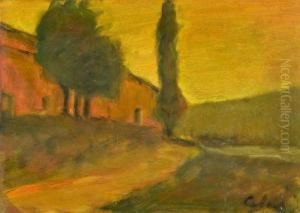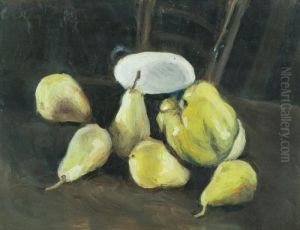Camillo Stagni Paintings
Camillo Stagni was an Italian painter of the Baroque period, born in 1674 in Modena, Italy. Although not as widely known as some of his contemporaries, Stagni was a respected artist of his time, contributing to the rich tapestry of Baroque art that was flourishing across Europe. Stagni's work is characterized by its dramatic use of light and shadow, a hallmark of the Baroque style, as well as its intense emotional expression and attention to detail.
Stagni received his artistic training in the workshop of Sigismondo Caula, a prominent artist in Modena. Under Caula's guidance, he honed his skills and developed a keen eye for the stylistic elements that defined the Baroque movement. He was particularly influenced by the works of the great masters such as Caravaggio, whose use of chiaroscuro - the strong contrast between light and dark - is evident in Stagni's paintings.
Throughout his career, Stagni worked on various religious commissions, which were common for artists of the era. His paintings often adorned the walls and altarpieces of churches, where the dramatic flair of his style would complement the spiritual fervor of the period. He also painted mythological scenes and portraits, although these are less prevalent in his known body of work.
Despite his contributions to the art of the Baroque period, Camillo Stagni's work did not gain the same level of lasting fame as some of his peers. However, his paintings are still appreciated by art historians and collectors for their embodiment of Baroque aesthetics and technique.
Stagni continued to work and live in Modena throughout his life. His influence was somewhat localized, contributing to the cultural and artistic environment of his hometown. He passed away in 1752, leaving behind a legacy that, while not as widely recognized as that of some other Baroque artists, is still valued for its artistic merit and historical significance within the context of the Italian Baroque movement.

